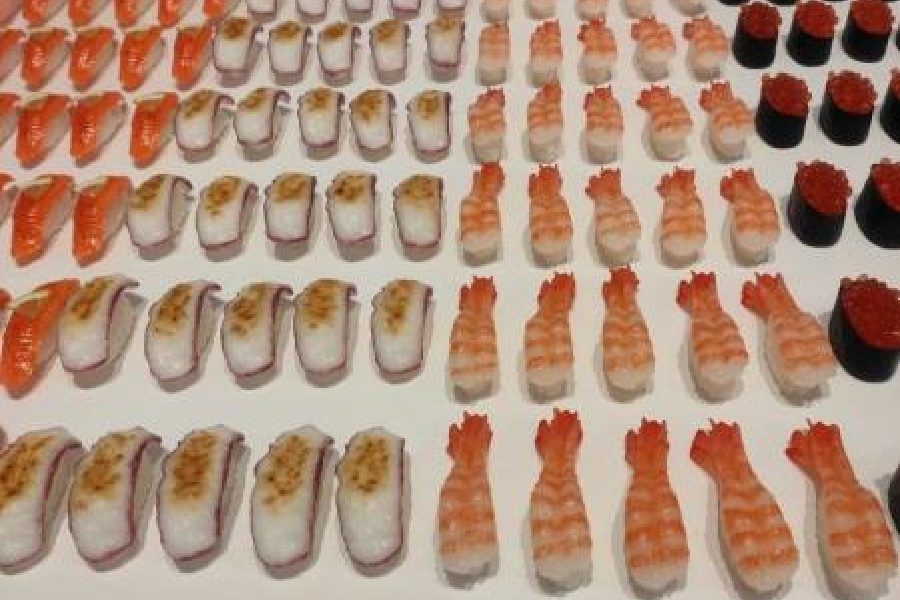Kolkatans and Japanese people have more than fish and rice in common.
“Just as Durga Puja is inscribed in Unesco’s List of Intangible Cultural Heritage, so is sushi,” said the Japanese consul general in Kolkata, Nakagawa Koichi.
He was inaugurating the touring exhibition ‘I love Sushi’ at the Indian Museum on Saturday afternoon. The exhibition, organised by the Consulate General of Japan in Kolkata, will continue till December 22.
Curated by the Japan Foundation, the exhibition in the pre-historic gallery of the Indian Museum traces the origin of this extraordinarily popular Japanese cuisine, follows its evolution and presents it in its current avatar in different parts
of Japan as well as the world.
In 2013, Unesco inscribed washoku, which translates to Japanese cuisine, on its Intangible Cultural Heritage list and sushi is the archetypal example of Japanese cuisine.
“Sushi is a refined and healthy food that looks and tastes good and it has already become a familiar item on menus worldwide,” said Koichi.
Sushi originated in northeastern Thailand, Laos and Yunnan in China and reached Japan a thousand years ago.
Since then it has radically changed taking advantage of the abundance of natural resources found in and around the islands of Japan, of the application and knowledge and ideas to sushi and of the never-ending Japanese drive to try good-tasting foods.
The type of sushi that is most popular today is nigiri-zushi, which emerged about 200 years ago in Edo, the city that is now known as Tokyo.
The original nare-zushi or fermented sushi prepared in south-east Asia came from the ancient tradition of wet rice farming.
The fish could be caught in the paddy fields and the water channels around them. They were preserved by adding salt and packed in steamed rice to trigger lactic acid fermentation.
This technique spread to Kyushu in Japan along with wet rice production techniques.
The Pacific bluefin tuna is a highly valued fish popular for sushi and sashimi.
Many Japanese, however, would say that tuna is the king of nigiri-zushi and
Edo people enjoyed having tuna.
